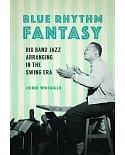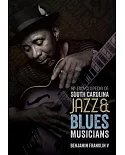In an essay on the future of jazz penned in 1955, Duke Ellington suggested that the new music called rock ’n’ roll “is the most raucous form of jazz, beyond a doubt.” So why did jazz and rock
become separate genres when they shared so many similar musical and cultural characteristics? The rift between jazz and rock - and jazz and rock scholarship - is based on a set of received
assumptions as to why jazz and rock are different. In When Genres Collide, Matt Brennan argues that there are other ways popular music history could have been written (and has been
written) that call the oppositional representation of jazz and rock into question. The book challenges the traditional divide between jazz and rock by going back to how they were first covered
in the two oldest surviving and most influential jazz and rock periodicals: Down Beat and Rolling Stone. It examines afresh the critical moments in history when the trajectories
and meanings of jazz and rock intersected, overlapped, or collided in dramatic ways. Ultimately, the book shows how music critics gradually constructed a divide between the two genres that
would be replicated for decades to come in both music journalism and music scholarship. This book will be valuable to the fields of both popular music studies and jazz studies, and in fact aims
to bridge a gap between these two musical worlds.





















